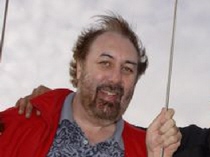
On Thursday, April 7th the San Diego Symphony and Capita Foundation presented an evening of science and music featuring world-renowned percussionist Dame Evelyn Glennie and research scientist Allison Coffin, Ph.D. While designed for deaf and hard of hearing students and their families and friends, this special evening proved to be a delightful performance for anyone interested in recent innovations in hearing research or the unconventional yet beautiful renditions of Dame Evelyn Glennie. In addition, some students were able to meet Dame Glennie, who they look up to as a role-model and idol, after the performance.
More photos in the Gallery.





